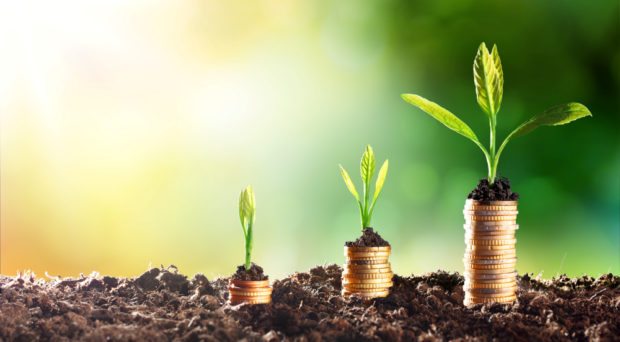
No-one disputes that there is an ongoing extinction of species in our biosphere. But how this is affecting the biodiversity of individual ecosystems, and what we can do about it, are questions that urgently need answers.
Anne Magurran (University of St Andrews, Scotland) presented her findings from BioTime, a project that is gathering together longitudinal datasets from all over the world. The coverage is currently patchy but the collection (which comprises about 60,000 species and will soon be published as an open access resource) already provides a clear indication that while the number of species found at each study site has not diminished over time, there has been “homogenization” – a loss of locally endemic species and replacement with more common “cosmopolitan” ones.
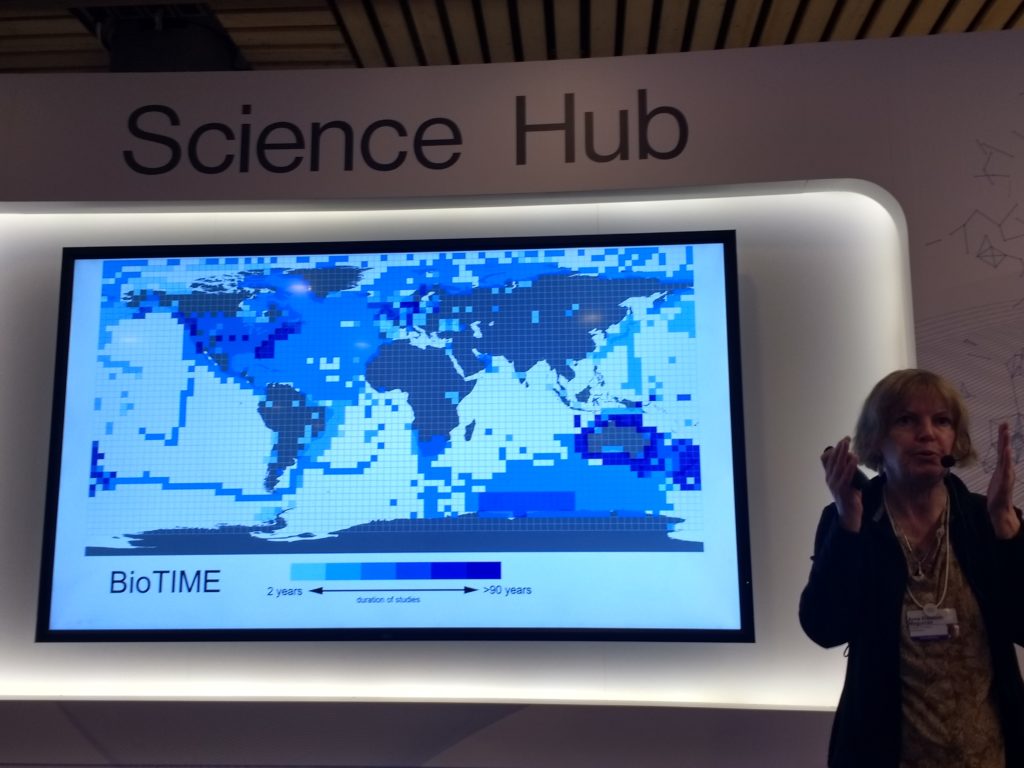
A presentation on Antarctica by Ceridwen (Crid) Fraser (Australian National University) highlighted the vulnerability of the iconic species that evolved in isolation on this icy polar land mass. Most have survived millions of years in extreme environmental conditions. Indeed Crid’s research has shown how many survived past ice ages around volcanoes. But rapid anthropogenic climate change is placing unprecedented challenges in their path.
As the ice melts and oceans warm, invasive species stand to compete with cold-adapted locals, and Antarctica is likely to experience both species invasion and species loss if global warming cannot be curtailed.
Reporting from the Australian Alps, where climate change is predicted to bring major changes in community composition, and species that need snow to complete their life cycle are soon expected to disappear, Adrienne Nicotra (Australian National University) explained how she is harnessing the power of genomics in an effort to prevent ecosystem collapse. Her experiments combine genomic sequencing and physiological stress tests with the aim of identifying a genetic signature predictive of adaptive capacity, so that ecosystem change can be managed, for example by the assisted immigration of selected species, to promote resilience to climate change.
A digital repository of Life with ethical obligations
The potential for genomics to record biodiversity before it is lost is a driving motivation behind the Earth BioGenome Project, a bold initiative to sequence the genome of every eukaryotic species on the planet, not only the 1.5 million or so that we already know about, but also the estimated 80-90% that have not yet been described. Presenting this as “A Moonshot for Biology” to WEF participants, project leader Harris Lewin (UC Davis) explained that due to improvements in sequencing technology, sequencing all of eukaryotic life (which will produce ~ an exobyte of data for evolutionary biologists to analyze) – should be achievable within 10 years and cost ~4.7 billion dollars, no more that the human genome sequence project did in its day.
Due to improvements in sequencing technology, sequencing all of eukaryotic life should be achievable within 10 years and cost ~4.7 billion dollars, no more that the human genome sequence project did in its day.
The economic rationale for investing in this ambitious project is that within the biodiversity of our living planet, lie secrets of nature with tremendous potential for answering present and future needs of mankind. Juan Carlos Castilla-Rubio , (CEO of Space Time Ventures, and a new partner in the Earth BioGenome Project), illustrated this with some engaging views of how various Amazonian species have already inspired ground-breaking research and products.
With the aim of making biodiversity a more visible asset whose benefits will be more readily developed and equitably shared, Juan Carlos has developed the Earth Bank of Codes, a bloc-chain technology based platform that will be used in a joint venture with the Earth BioGenome Project in the Amazon basin.
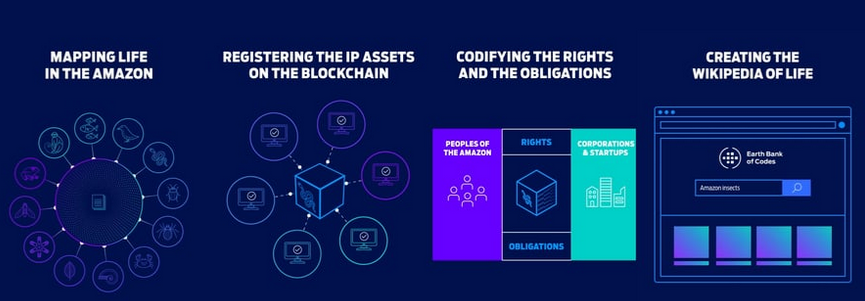
Each and every genome sequenced will be tagged by a code that encrypts details of its provenance, and also obligations associated with its use, so while the sequence will be available to all in a public repository, in the event of any commercial development, the people who have helped to protect their local biomes will be entitled to a share of the profit.
Passionate about protecting the biodiversity of the Amazon as well as unlocking its potential, Juan Carlos hopes that his innovative codes will – for the first time in history – guarantee a reward for the indigenous peoples whose custody of their natural heritage has already played a valuable role in preserving this great forest on which we all depend.
On deforestation and climate change: Can we achieve a turning point that will avoid a tipping point?
It is not just romantic idealism to applaud the indigenous peoples of the Amazon. As explained by Yadvinder Malhi (Environmental Change Institute, Oxford) in his Science Hub presentation on the Amazon forest, the last five years of satellite monitoring data show that the reserves in which they live have been relatively well protected, despite continuing shrinkage of the forest elsewhere.
If you’d like to tune in to how forests are doing globally, go to Global Forest Watch. In Brazil, the overall picture is a slowing rate of deliberate deforestation, thanks to the indigenous people, better monitoring technology and enlightened public policy that includes a rapid response to illegal forest clearance detected by satellite.
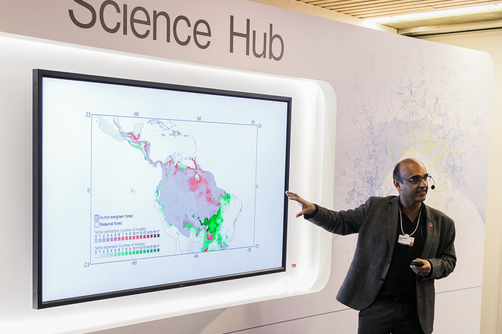
But increasing areas of forest, especially those not in reserves, are being lost to fires that are unintentionally allowed to spread. As Yadvinder pointed out, this is a tangible problem amenable to local action. Putting out these fires sooner would limit the damage they cause, even if we cannot immediately halt the global warming that underlies their increasing incidence. And the cost of not doing so could be incalculable.
The Amazon is under threat of turning into a degraded fire-prone scrub, a tipping point that would not only mean an irrecoverable loss of biodiversity in this region, but have catastrophic effects on life throughout the world.
The main driver of intentional deforestation is agriculture – the FAO reports that in 2016 there was a net loss of 7million hectares of forest and a net gain of 6 million hectares of agricultural land in tropical countries. But this is not a sustainable way to produce more food.
Speaking on several panels during the conference, including one on Sustainable and Nutritious Food and another, From Famine to Food Security in which the impact of climate change was widely considered was Frances Seymour from the World Resources Institute. Frances cited a statistic from her recent book, explaining that halting tropical deforestation and allowing damaged forests to grow back could reduce current annual global greenhouse gas emissions by as much as 30 percent. She emphasized that forests need not compete with food production but could be part of the solution to maintaining a climate that supports it.
Eating less meat could also be part of the solution. Introducing the session on Famine and Food Security, Tim Benton (Chatham House and Leeds University) pointed out that meat consumption on a global basis is a greater contributor to climate change than the transport sector. Yet as things stand, production continues to increase to feed human demand.
“Impossible Burgers” use 95 percent less land, 74 percent less water, and emit roughly 87 percent less greenhouse gases compared to a beef burger made from cows.
Not a believer that governments will be able to act effectively to counteract this trend, or that enough people will change their habits before it is too late, Patrick Brown (previously a Professor at Stanford and a longtime champion of open access science publishing has redirected his own career to do what he can by starting Impossible Foods, a company that uses plants to make food that has the taste, texture and nutritional qualities of meat, but with a hugely less damaging environmental impact.
There were samples on offer in Davos, and I can personally testify that the “fake-meat”, whose key meat-like ingredient is the haemoglobin-like protein found in legumes, tastes like the real thing. Yet “Impossible Burgers”, which are currently on sale at hundreds of restaurants in the US and due to expand into Asia this spring, use 95 percent less land, 74 percent less water, and emit roughly 87 percent less greenhouse gases compared to a beef burger made from cows.
Of course this was not the only innovation that might help avert a tipping point of accelerated climate change and consequent widespread famine. Mosa Meats presented their progress in producing hamburgers from tissue-cultured cells, and scattered throughout the conference there were conversations about new technologies and science-based advances, such as the use of genome-editing technology to develop improved food crops. There was also talk of biosensors for optimizing fertilizer treatment, that offer the promise of increasing food production sustainably without encroaching further on forests and triggering ecosystem collapse.
Costing the earth – Economic models that respect biology
When will the economic narrative that frames so much of public policy, and measures business success, start to take fully into account the limits set by the biosphere? At a dinner in which Nobel Laureate Economists gave a short talk in a moderated discussion, the standard topics of markets, economic growth, and jobs were aired.
Social distress and climate change also received a mention. But more radical ideas were voiced from our table. Oxford Economist Kate Raworth argued for a complete shift in thinking – a doughnut theory of economics that is shaped by the constraints of our living planet.
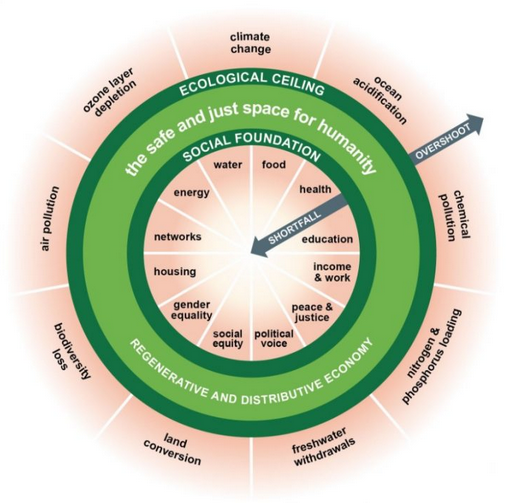
Small beginnings perhaps, but there is already a concept known as Natural Capital, familiar to economists, environmentalists and ecologists such as David Lindenmayer (Australian National University), which puts a price on natural resources that it makes long-term economic sense to sustain. David’s work is heartening on two accounts, first he has monitored the recovery of biodiversity in a large swathe of land allowed to return to forest after being cleared for grazing, and second his calculations show that this return to native forest is of overall benefit to the local economy as well as the ecosystem.
Can we hope that this is a foretaste of the future, which along with the move to more sustainable energy sources (another theme of the WEF) will help rein in the sixth great extinction that is unfolding in our Anthropogenic age?
Comments